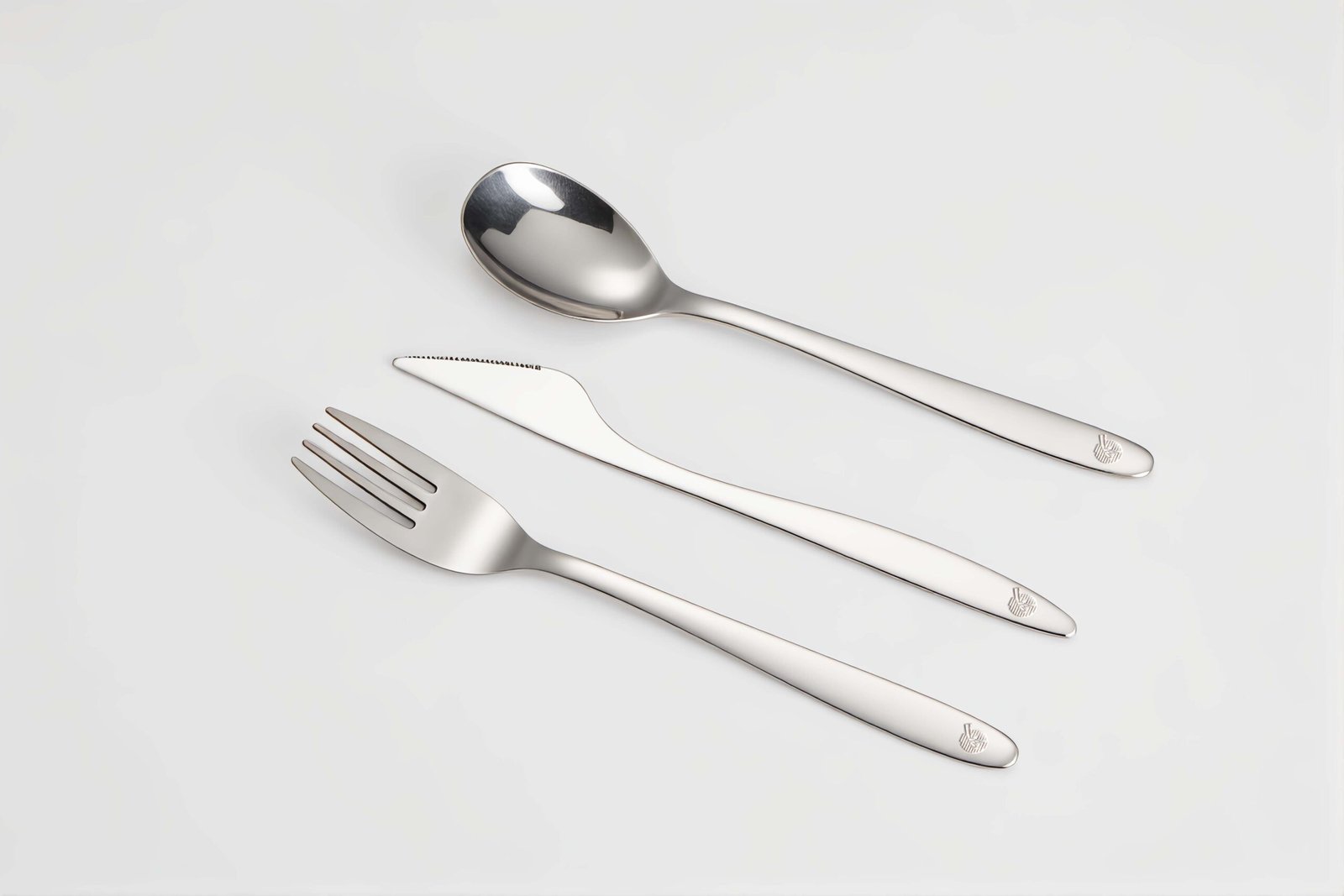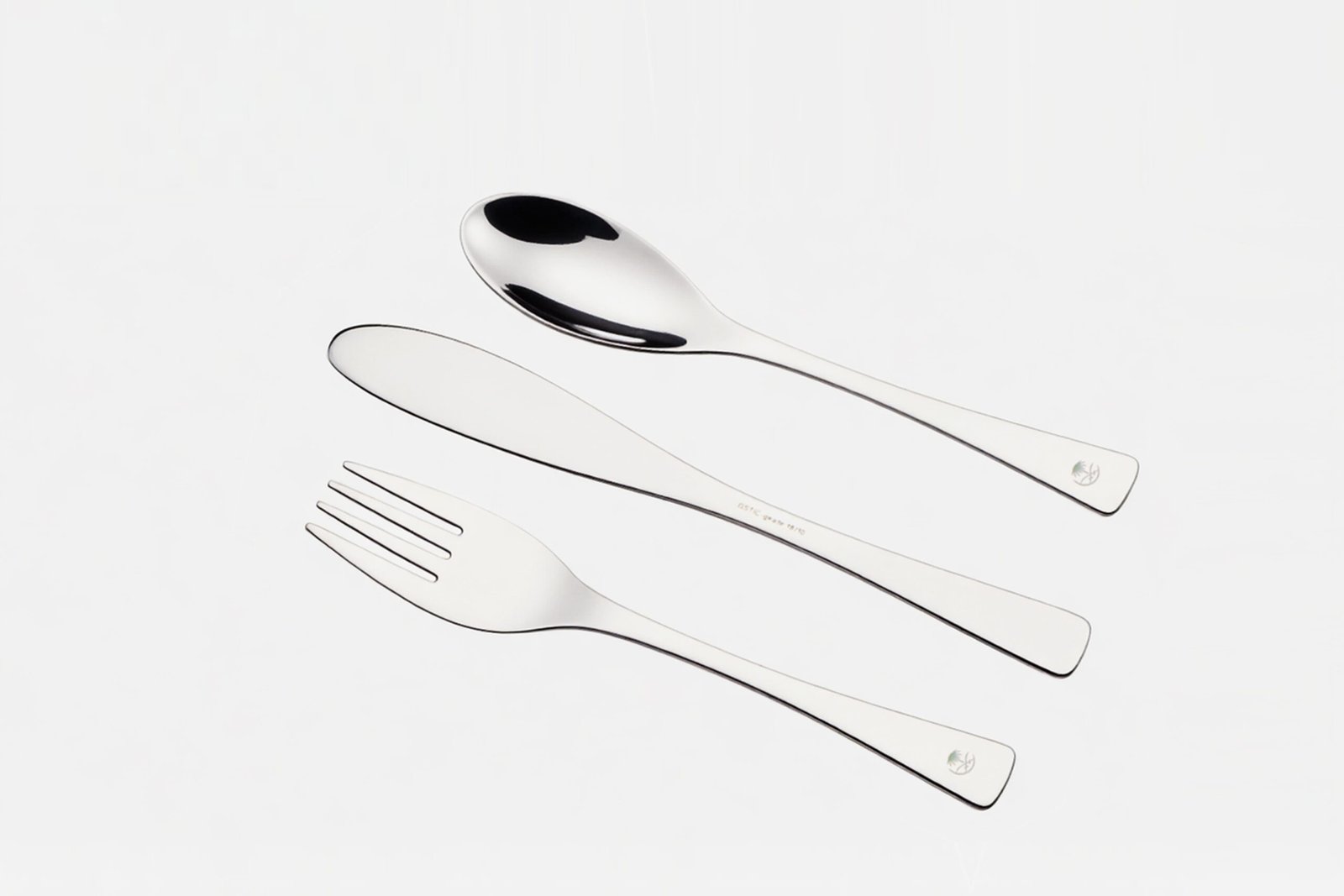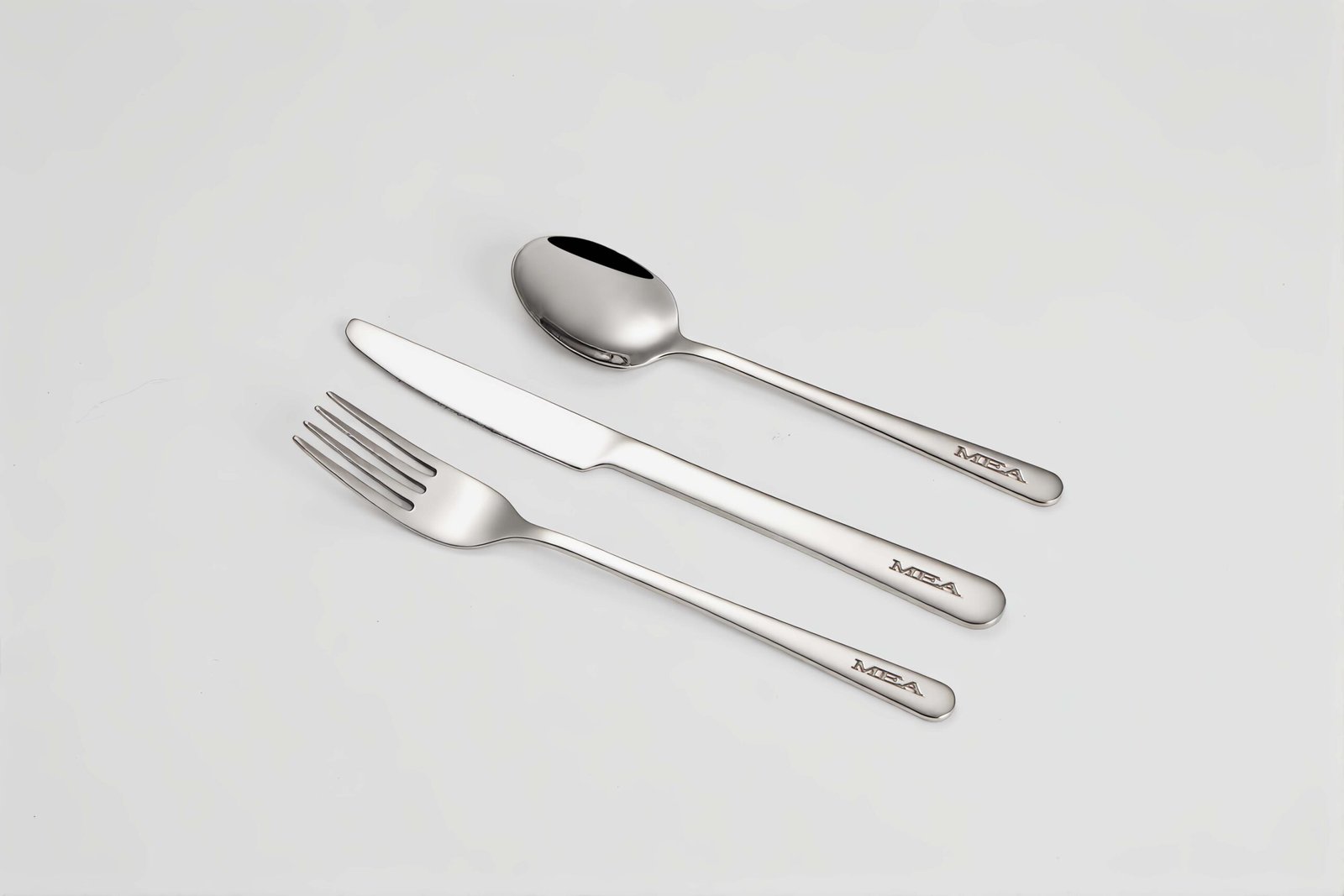In a culture where chopsticks rule the table, using silverware can feel awkward, unnecessary—or sometimes even inappropriate.
Yes, using silverware in China is considered appropriate in the right context—such as Western-style restaurants or international households—but it’s not part of traditional dining culture.
While chopsticks are still dominant in everyday Chinese meals, modern dining habits are evolving fast. From hotels to high-end restaurants, you’ll increasingly find stainless steel cutlery neatly laid beside your spoon. So, is silverware foreign here? Not exactly. Let me explain.
Table of Contents

Do they use silverware in China?
It might surprise you that silverware is both manufactured and used in China, but not in the same way it’s used in the West.
Chinese people do use silverware—but mostly in Western restaurants, hotels, or households influenced by international living. Day-to-day meals still rely on chopsticks.
Silverware has a role—but it’s not the main act
China’s culinary culture has deep roots, and chopsticks are essential to it. Most Chinese dishes are designed with chopsticks in mind—think of shared plates, bite-sized cuts, and no knife required at the table. But with globalization, silverware has found its place too.
Table: Where Silverware Appears in China
| Setting | Use of Silverware | Use of Chopsticks | Notes |
|---|---|---|---|
| Home | Rare | Very common | Some households may keep forks for kids |
| Western Restaurants | Common | Sometimes offered | Usually depends on cuisine |
| 5-Star Hotels | Standard | Available on request | Often set with full Western cutlery |
| Cafeterias / Local Eateries | Rare | Always | Chopsticks are the norm |
| International Schools / Expats | Common | Varies | Mixed utensils based on cultural diversity |
For Chinese manufacturers like us, this cultural blend creates new business. We export Western-style cutlery every day, but we also see rising demand in China—from hotels, luxury homes, and even boutique restaurants.
Is silverware made in China safe?
With so much cutlery labeled “Made in China,” it’s natural for customers to ask: is it safe?
Yes, silverware made in China is safe—if it comes from certified manufacturers that follow international standards such as LFGB, FDA, and BSCI.
Not all suppliers are created equal—here’s what to look for
As a Chinese cutlery supplier with over 12 years of experience, I know safety is always the top concern. That’s why our products carry certifications like:
LFGB (Germany) – ensures food-contact safety
FDA (USA) – tests for heavy metals and toxins
BSCI – evaluates labor and environmental compliance
Table: Common International Safety Standards
| Standard | Country / Region | Tests For | What It Means For You |
|---|---|---|---|
| LFGB | Germany | Odor, taste, heavy metals | Trusted by European clients |
| FDA | USA | Toxic substances, lead, cadmium | Common requirement for US importers |
| DGCCRF | France | Migration of elements | Common for French and EU buyers |
| BSCI | EU (social audit) | Factory working conditions | Ethical and responsible sourcing |
If you’re sourcing silverware, don’t just check the price—check the documentation. Ask for test reports. Visit the factory if you can. In our company, we always offer full transparency.

Why do Asians use chopsticks instead of silverware?
The answer isn’t just cultural—it’s also practical.
Asians use chopsticks because their traditional food and dining habits evolved around shared meals, small bites, and minimal need for cutting.
It’s not about resistance to change—it’s about harmony with the food
Chopsticks match Asian cuisine. A stir-fried dish doesn’t need a knife. A bowl of rice can be scooped. Dumplings are best pinched—not stabbed.
Table: Chopsticks vs. Silverware in Functionality
| Action | Silverware Needed | Chopsticks Advantage |
|---|---|---|
| Cutting meat | Yes (knife) | Rarely needed in Chinese food |
| Eating noodles | Fork (ok) | Chopsticks offer more control |
| Handling tofu | Hard with fork | Easier with chopsticks |
| Eating rice | Spoon or fork | Scoop with bowl close to mouth |
Of course, exposure to Western dining has made forks and knives more familiar in cities like Shanghai or Beijing. But traditions remain strong. In my family, even when we have steak at home, we might still use chopsticks for the side dishes.
Is it rude to not leave food on your plate in China?
This is one of the most misunderstood etiquette questions foreigners ask.
In modern China, finishing your plate is a sign of appreciation—not leaving food behind. But older traditions sometimes say the opposite.
Culture is evolving, but some values stay
Traditionally, leaving a small amount of food showed the host gave you more than enough. But in today’s China, especially among younger generations, leaving food is seen as wasteful.
Table: Food Etiquette Expectations
| Situation | Finishing Food | Leaving Food | Comment |
|---|---|---|---|
| Family Dinner (Modern) | Expected | Seen as waste | Clean plate = gratitude and respect for cook |
| Banquet (Formal, Traditional) | Optional | Slightly OK | Leaving a bit shows host provided enough—cultural nuance |
| Buffet or Self-Serve | Required | Discouraged | Avoid food waste—take only what you can eat |
| Western Restaurants in China | Normal | Not expected | Follow Western etiquette—clean plate is polite |
When in doubt, follow your host’s lead. If you’re at a formal Chinese banquet, leaving a bite or two might be safer. But at someone’s home? Clean that plate.
Is it safe to buy on Made in China?
Safety comes from standards—not origin. “Made in China” is not a red flag. Lack of oversight is.
It is safe to buy ‘Made in China’ products if you work with verified suppliers, review certifications, and understand what you’re purchasing.
You get what you inspect—not what you expect
We’ve all heard stories of cheap goods. But I also know clients who’ve built million-dollar brands by working with Chinese factories. The difference is due diligence.
Table: Red Flags vs. Green Flags When Sourcing from China
| Signal | Red Flag | Green Flag |
|---|---|---|
| Price is too good to be true | ✅ Unsustainable or risky | — |
| No test reports or certificates | ✅ Lacks credibility | ❌ Must have valid documentation |
| Alibaba with no verified badge | ✅ May not be legitimate | ✅ Verified supplier with reviews |
| Factory offers samples | ✅ Good sign | ✅ Means they are confident in quality |
| Willing to video call or factory tour | ✅ Transparency | ✅ Shows they’re real and open to audit |
I always tell clients: check beyond the product. Evaluate the people and processes behind it. Trust is built through communication.
Is sterling silver made in China real?
Let’s bust a myth: China can—and does—make real sterling silver.
Yes, sterling silver made in China can be real, as long as it’s correctly hallmarked (e.g., 925) and verified through reputable sources.
Don’t trust the label—verify it
Sterling silver must contain 92.5% pure silver. In China, some vendors may misuse this label. But serious manufacturers respect global standards.
Table: How to Identify Real Sterling Silver
| Feature | What to Check | What It Means |
|---|---|---|
| Hallmark | “925”, “S925” | Confirms 92.5% pure silver – standard for sterling |
| Magnet test | Should not stick | Silver is non-magnetic; if it sticks, it’s fake |
| Tarnish test | Silver may tarnish, not rust | Indicates authenticity; real silver oxidizes |
| Buy from known supplier | Traceable, reviews, guarantees | Ensures authenticity and buyer protection |
If you’re not sure, ask for lab reports. Reputable Chinese silver suppliers (especially exporters) will always have those ready.
Is stainless steel made in China safe?
We make it. We use it. And yes—it’s safe.
Stainless steel made in China is safe when manufactured under proper standards like 18/10 composition, LFGB/FDA testing, and strict factory quality control.
Not all stainless steel is created equal
Some suppliers cut corners. They might use lower nickel content or substitute materials. But many of us, especially exporters, know the importance of international trust.
Table: Grades of Stainless Steel Commonly Used in China
| Grade | Nickel % | Corrosion Resistance | Typical Use |
|---|---|---|---|
| 18/10 | 10% | Excellent | Premium cutlery, luxury and export markets |
| 18/8 | 8% | Very Good | Everyday home use, balanced quality |
| 18/0 | 0% | Moderate to Low | Budget-friendly sets, magnet-friendly |
| 13/0 | 0% | Low | Knives, disposable or promotional items |
I always suggest clients choose based on use-case. For gifts or luxury use, go with 18/10. For large quantity fast food service? 18/0 is OK.

What is the safest silverware to eat from?
When health is the top concern, material and coating matter most.
The safest silverware is made from food-grade 18/10 stainless steel or certified sterling silver, free from coatings, BPA, or questionable plating.
Simplicity is safety
Avoid plastic handles, non-stick coatings, and mystery metals. Go for:
– Pure stainless steel (18/10 or 304 grade)
– Certified by LFGB or FDA
– No sharp edges or loose welds
Table: Silverware Safety Checklist
| Material | Safe for Daily Use | Notes |
|---|---|---|
| 18/10 Stainless | ✅ | Best combination of strength and safety |
| Sterling Silver | ✅ (if real) | Needs polishing; safe if pure and uncoated |
| Plastic | ❌ | Can degrade, may contain BPA or other toxins |
| Bamboo | ✅ (if untreated) | Eco-friendly, but less durable over time |
| Coated metals | ❌ | Risk of leaching chemicals as coating wears |
I use 18/10 at home. I send 18/10 to my clients. It’s reliable, stylish, and durable.
Is pottery from China safe?
People worry about lead. That’s fair. But again, the issue isn’t “China”—it’s how the product is made.
Yes, pottery from China is safe if it’s made with lead-free glaze and certified for food contact by trusted labs.
Artware is not the same as tableware
Some decorative ceramics may not be food-safe. But professional manufacturers, especially those who export, follow strict glazing protocols.
Table: How to Identify Food-Safe Pottery
| Feature | Indicator | Safe? |
|---|---|---|
| Labeled “For decoration only” | ❌ Not food safe | No |
| LFGB / FDA certified | ✅ Yes | Yes |
| Lead / Cadmium test report | ✅ Must be included | Absolutely necessary |
| Used for export | ✅ Usually safe | Yes, but still check documentation |
If you’re sourcing pottery, ask one simple question: “Can you show me your test reports?” That’s all it takes.
Silverware in China is appropriate, evolving, and safe—if you know where to look and what to ask.






